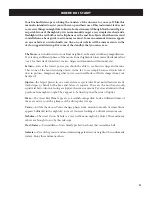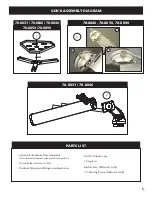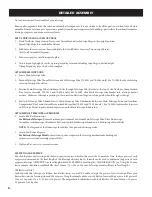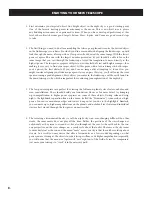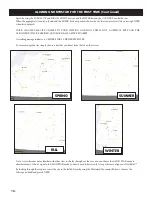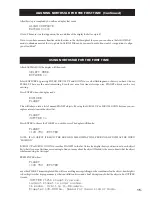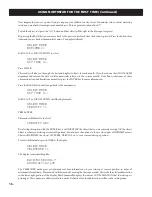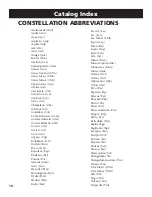
WHERE DO I START?
3.
Your Bushnell telescope can bring the wonders of the universe to your eye. While this
manual is intended to assist you in the set-up and basic use of this instrument, it does not
cover everything you might like to know about astronomy. Although Northstar will give a
respectable tour of the night sky, it is recommended you get a very simple star chart and a
flashlight with a red bulb or red cellophane over the end. For objects other than stars and
constellations, a basic guide to astronomy is a must. Some recommended sources appear
on our website at www.bushnell.com. Also on our website will be current events in the
sky for suggested viewing. But, some of the standbys that you can see are:
The Moon—
a wonderful view of our lunar neighbor can be enjoyed with any magnification.
Try viewing at different phases of the moon. Lunar highlands, lunar maria (lowlands called
“seas” for their dark coloration), craters, ridges and mountains will astound you.
Saturn—
even at the lowest power you should be able to see Saturn’s rings and moons.
This is one of the most satisfying objects in the sky to see simply because it looks like it
does in pictures. Imagine seeing what you’ve seen in textbooks or NASA images from your
backyard!
Jupiter—
the largest planet in our solar system is spectacular. Most noted features are its
dark stripes or bands both above and below its equator. These are the north and south
equatorial belts. Also interesting are Jupiter’s four major moons. Pay close attention to their
positions from night to night. They appear to be lined up on either side of Jupiter.
Mars—
The Great Red Planet appears as a reddish-orange disk. Look at different times of
the year and try to catch a glimpse of the white polar ice caps.
Venus—
just like the moon, Venus changes phases from month to month. At times Venus
appears brilliantly in the night sky, just as if you were looking at a distant crescent moon.
Nebulae—
The Great Orion Nebula is a very well known night sky object. This and many
others are brought to you by this telescope.
Star Clusters—
View millions of stars densely packed in a cluster that resembles a ball.
Galaxies—
One of the greatest and most interesting galaxies is our neighbor the Andromeda
Galaxy. Enjoy this and many others.
Summary of Contents for Northstar 78-8840
Page 2: ...CONTENTS ENGLISH 2 FRANÇAIS 35 ESPAÑOL 69 DEUTSCH 103 ITALIANO 137 PORTUGUÊS 171 ...
Page 13: ...M MENU TREE ...
Page 34: ...33 NOTES ...
Page 35: ...NOTES 34 ...
Page 47: ...M ARBRE DES MENUS ...
Page 68: ...67 NOTES ...
Page 69: ...NOTES 68 ...
Page 81: ...M ÁRBOL DEL MENÚ ...
Page 102: ...101 NOTAS ...
Page 103: ...NOTAS 102 ...
Page 115: ...M MENÜ ARBORESZENZ ...
Page 136: ...135 HINWEISE ...
Page 137: ...HINWEISE 136 ...
Page 149: ...M ALBERO DEI MENU ...
Page 170: ...169 NOTE ...
Page 171: ...NOTE 170 ...
Page 183: ...M MENU EM ÁRVORE ...




